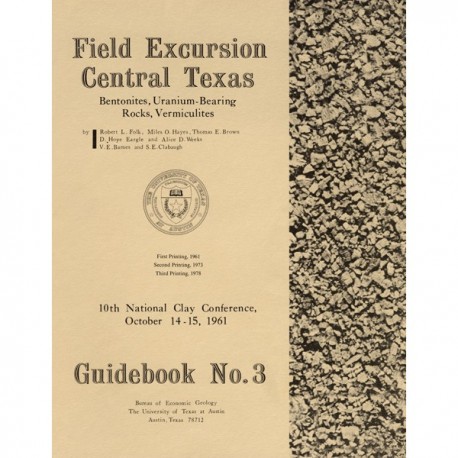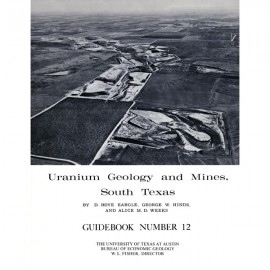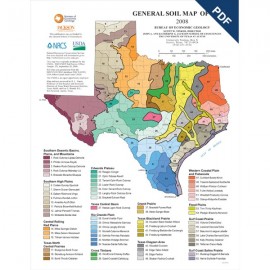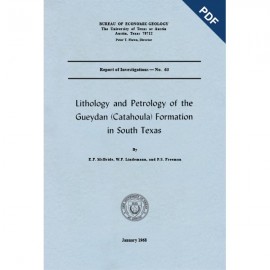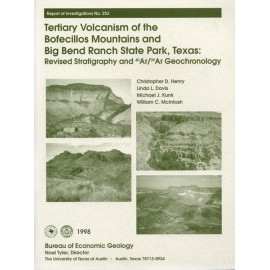Guidebooks
-
Books & Reports
- Reports of Investigations
- Guidebooks
- Udden Series
- Geological Circulars
- Down To Earth
- Atlases of Major Oil and Gas Reservoirs
- Texas Memorial Museum Publications
- Environmental Geologic Atlas of the Texas Coastal Zone
- Mineral Resource Circulars
- Other Reports
- Seminars and Workshops
- Handbooks
- Submerged Lands of Texas
- Symposia
- Annual Reports
- Open File Reports
-
Maps & Cross Sections
- Thematic Maps
- Miscellaneous Maps, Charts & Sections
- Geologic Atlas of Texas
- STATEMAP Project Maps
- Geologic Quadrangle Maps
- Cross Sections
- Highway Geology Map
- Energy and Mineral Resource Maps
- Shoreline Change and Other Posters
- Wilcox Group, East Texas, Geological / Hydrological Folios
- Bouguer Gravity Atlas of Texas
- River Basin Regional Studies
- Featured Maps
- Posters
- Teachers & the Public
-
Geological Society Publications
- Gulf Coast Association of Geological Societies
- Alabama Geological Society
- Austin Geological Society
- Corpus Christi Geological Society
- Houston Geological Society
- Lafayette Geological Society
- Mississippi Geological Society
- New Orleans Geological Society
- South Texas Geological Society
- GCS SEPM Publications
- Historic BEG & UT Series
Field Excursion, Central Texas: Bentonites, Uranium-Bearing Rocks, Vermiculites
GB0003
Field Excursion, Central Texas: Bentonites, Uranium-Bearing Rocks, Vermiculites, by R. L. Folk, M. O. Hayes, T. E. Brown, D. H. Eargle, A. D. Weeks, V. E. Barnes, and S. E. Clabaugh. 53 p., 8 figs., 1961. ISSN: 0363-4132. Print
This product is no longer in stock
The departure point of the Villa Capri Motor Hotel may be gone, but the geologic information within Guidebook Number 3 remains relevant to this day:
"The four stops of this field trip are in the Upper Eocene (Jackson) and Oligocene volcanic ash and bentonite beds, which crop out about 50 miles southeast of Austin. In the road log, the geology of the area between Austin and these volcanic beds is only briefly noted. In general, beds along the route dip about 1 or 2 degrees to the southeast, so that starting with the Upper Cretaceous Austin chalk, successively younger beds are encountered from Austin, Travis County, to, Gonzales, Gonzales County. There are almost no folds, but there are two extensive fault zones; one, the Balcones, starts near Dallas, trends through the west part of Austin, and extends far west of San Antonio; the other, the Luling-Mexia fault zone, extends through Bastrop County. The area between these fault zones is a graben. Faults in Bastrop County have vertical displacements up to 600 feet, Cretaceous marine limestones, chalks, and marls are succeeded by Eocene sands and clays, largely continental. The Wilcox and Claiborne divisions of the Eocene are very largely non-volcanic; the only evidences of volcanism are sporadic plagioclase, sphene, apatite, subhexagonal biotite, euhedral zircon, and phenocrysts of high-temperature quartz, In contrast, the Jackson (upper Eocene) and the Catahoula (Oligocene?) contain great thicknesses of bentonite, tuff, and volcanic sand."
Citation:
Folk, R. L., Hayes, M. O., Brown, T. E., Eargle, D. H., Weeks, A. D., Barnes, V. E., and Clabaugh, S. E., 1961, Field Excursion, Central Texas: Bentonites, Uranium-Bearing Rocks, Vermiculites: The University of Texas at Austin, Bureau of Economic Geology, Guidebook No. 3, 53 p.
